Sewing
At the end of textile production is the finished garment. The fabric is, depending on its material and colour, first being dyed and then cut into the required pieces and sewn together. On archaeological finds the warp threads have often been used as sewing thread. Whether those were pulled out of the fabric or whether they are the "scrap" that's left after weaving, the find descriptions usually don't tell.
We sew our garments by hand, as this was common in the early medieval period. As an orientation we use sewing patterns which are common in the reenactment scene and which are based on scientific evidence. We use authentic fibers only - i.e. no cotton or synthetic fibers - and, if possible, only known weaving patterns (e.g. tabby weave, different twills). If the fabric's colour is not a natural grey or brown from the start, we resort to authentic hues - if not originally plant-dyed, then as close to a plant-dyed colour as possible. It is possible that sometimes the sewing thread is of a different colour than the fabric, and that the seams hence are more notable than they would have been 1100 years ago. But we still hope to evoke an image that come close to the reality of the early medieval period/Viking Age.
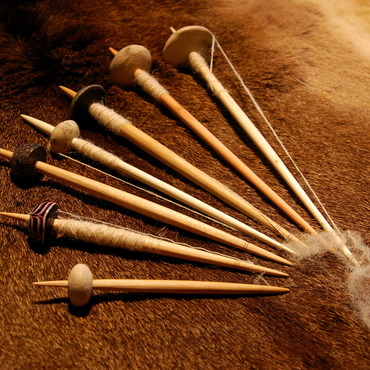
Levels of Textile Production
According to Eva Andersson Strand, four different levels of textile production can be distinguished.
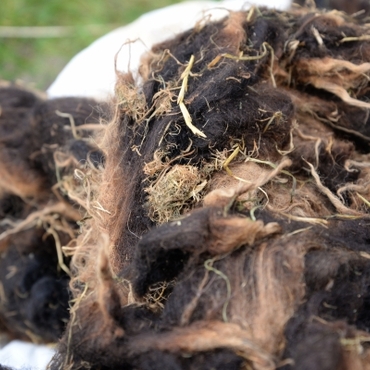
Raw Wool
The raw wool contains everything left in there when the sheep is shorn. Including insects, flora and things from the stable floor.
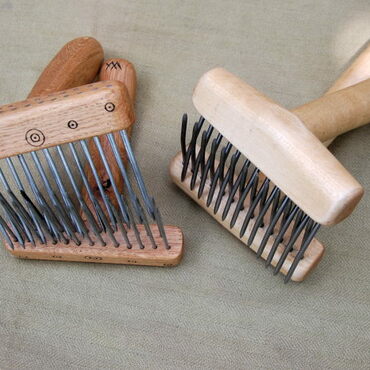
Combing
By combing, the wool is being prepared for spinning.
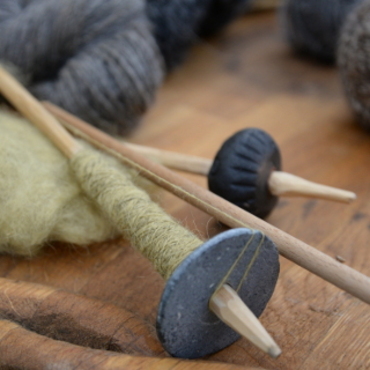
Spinning
With the spindle, the wool is spun into a thread.
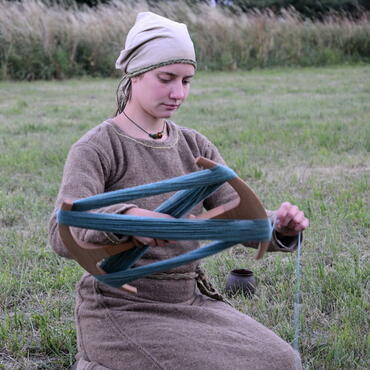
Using a niddy noddy
After spinning, the yarn might be wound onto a niddy noddy.
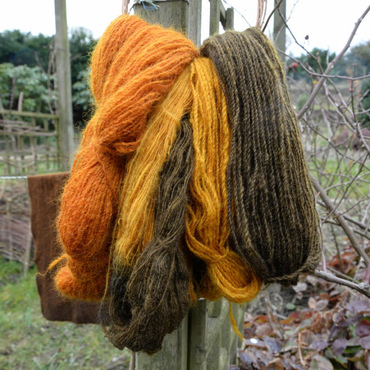
Dyeing
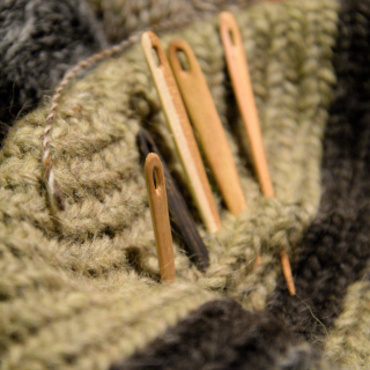
Nalbinding
Different garments can be produced with this old technique.